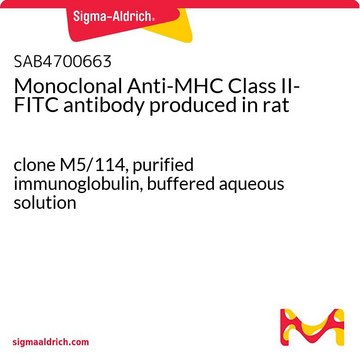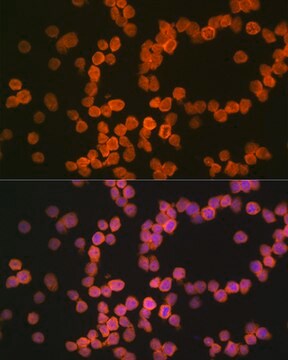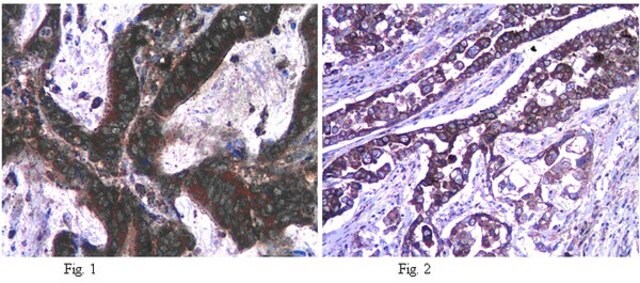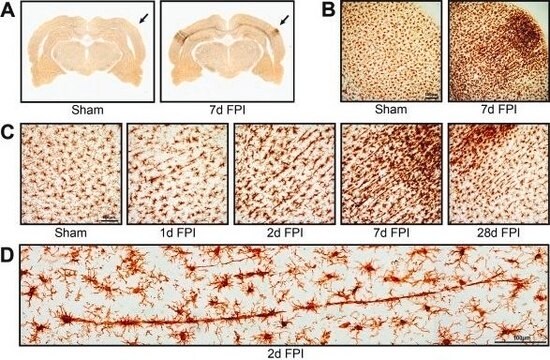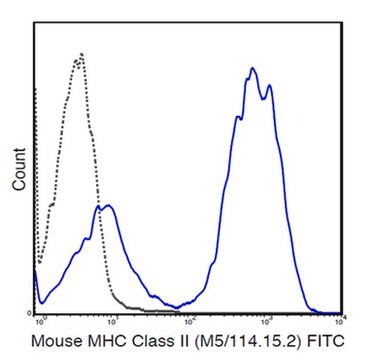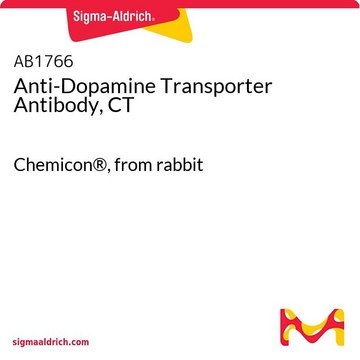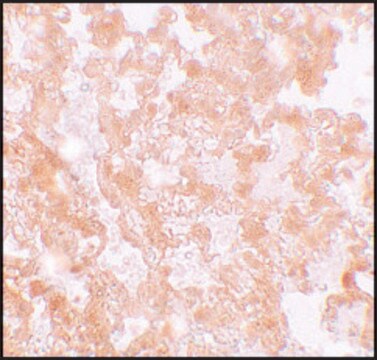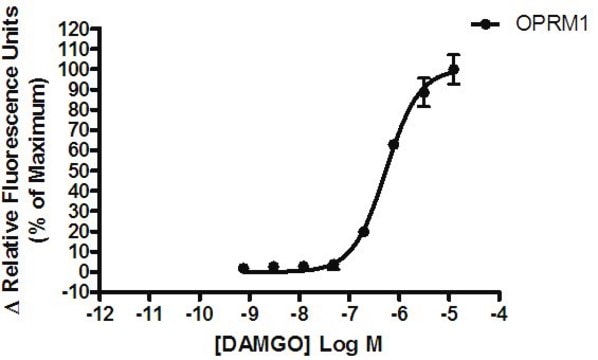MABF33
Anti-MHC-Klasse II (I-A/I-E) Antikörper, Klon M5/114
clone M5/114, from rat
Synonym(e):
CD74 molecule, major histocompatibility complex, class II invariant chain, Ia-associated invariant chain, CD74 antigen (invariant polypeptide of major histocompatibility complex, class II antigen-associated), gamma chain of class II antigens, Ia antigen-
About This Item
Empfohlene Produkte
Biologische Quelle
rat
Qualitätsniveau
Antikörperform
purified antibody
Antikörper-Produkttyp
primary antibodies
Klon
M5/114, monoclonal
Speziesreaktivität
mouse
Methode(n)
flow cytometry: suitable
immunohistochemistry: suitable
western blot: suitable
Isotyp
IgG2bκ
NCBI-Hinterlegungsnummer
UniProt-Hinterlegungsnummer
Versandbedingung
wet ice
Posttranslationale Modifikation Target
unmodified
Angaben zum Gen
mouse ... Cd74(16149)
Verwandte Kategorien
Allgemeine Beschreibung
Anwendung
Immunhistochemische Analyse: Eine frühere Charge wurde von einem unabhängigen Labor zur IH mit Thymusgewebe verwendet. (de Bont, E., et al. (1999). Int. Immunol. 11(8):1295-1306.)
Qualität
Western-Blot-Analyse: 1 µg/ml dieses Antikörpers wies MHC-Klasse II (I-A/I-E) in 10 µg Gewebelysat der Mausmilz nach.
Zielbeschreibung
Es gibt 2, durch alternatives Spleißen entstehende Isoformen: 32 kDa, lange Isoform, und 24 kDa, kurze Isoform.
Physikalische Form
Sonstige Hinweise
Sie haben nicht das passende Produkt gefunden?
Probieren Sie unser Produkt-Auswahlhilfe. aus.
Lagerklassenschlüssel
12 - Non Combustible Liquids
WGK
WGK 1
Flammpunkt (°F)
Not applicable
Flammpunkt (°C)
Not applicable
Analysenzertifikate (COA)
Suchen Sie nach Analysenzertifikate (COA), indem Sie die Lot-/Chargennummer des Produkts eingeben. Lot- und Chargennummern sind auf dem Produktetikett hinter den Wörtern ‘Lot’ oder ‘Batch’ (Lot oder Charge) zu finden.
Besitzen Sie dieses Produkt bereits?
In der Dokumentenbibliothek finden Sie die Dokumentation zu den Produkten, die Sie kürzlich erworben haben.
Unser Team von Wissenschaftlern verfügt über Erfahrung in allen Forschungsbereichen einschließlich Life Science, Materialwissenschaften, chemischer Synthese, Chromatographie, Analytik und vielen mehr..
Setzen Sie sich mit dem technischen Dienst in Verbindung.